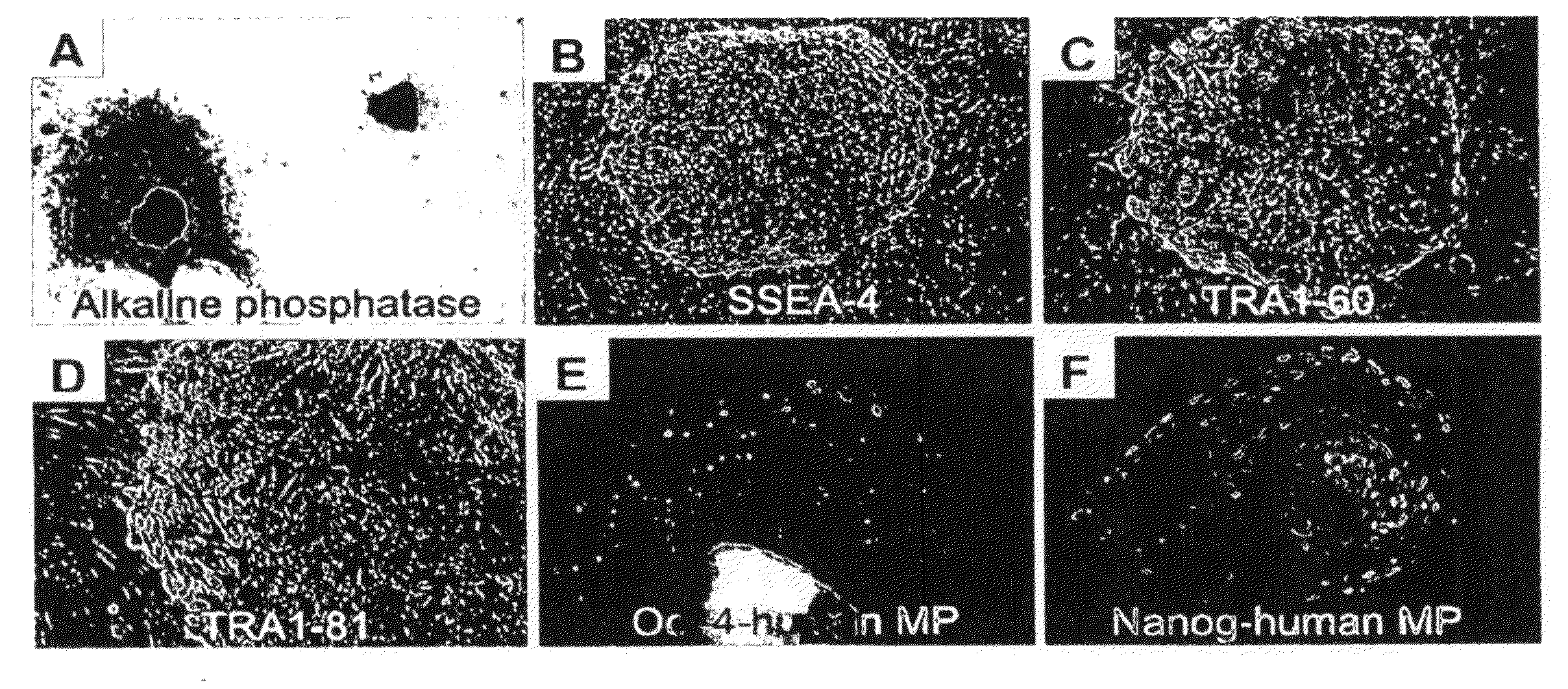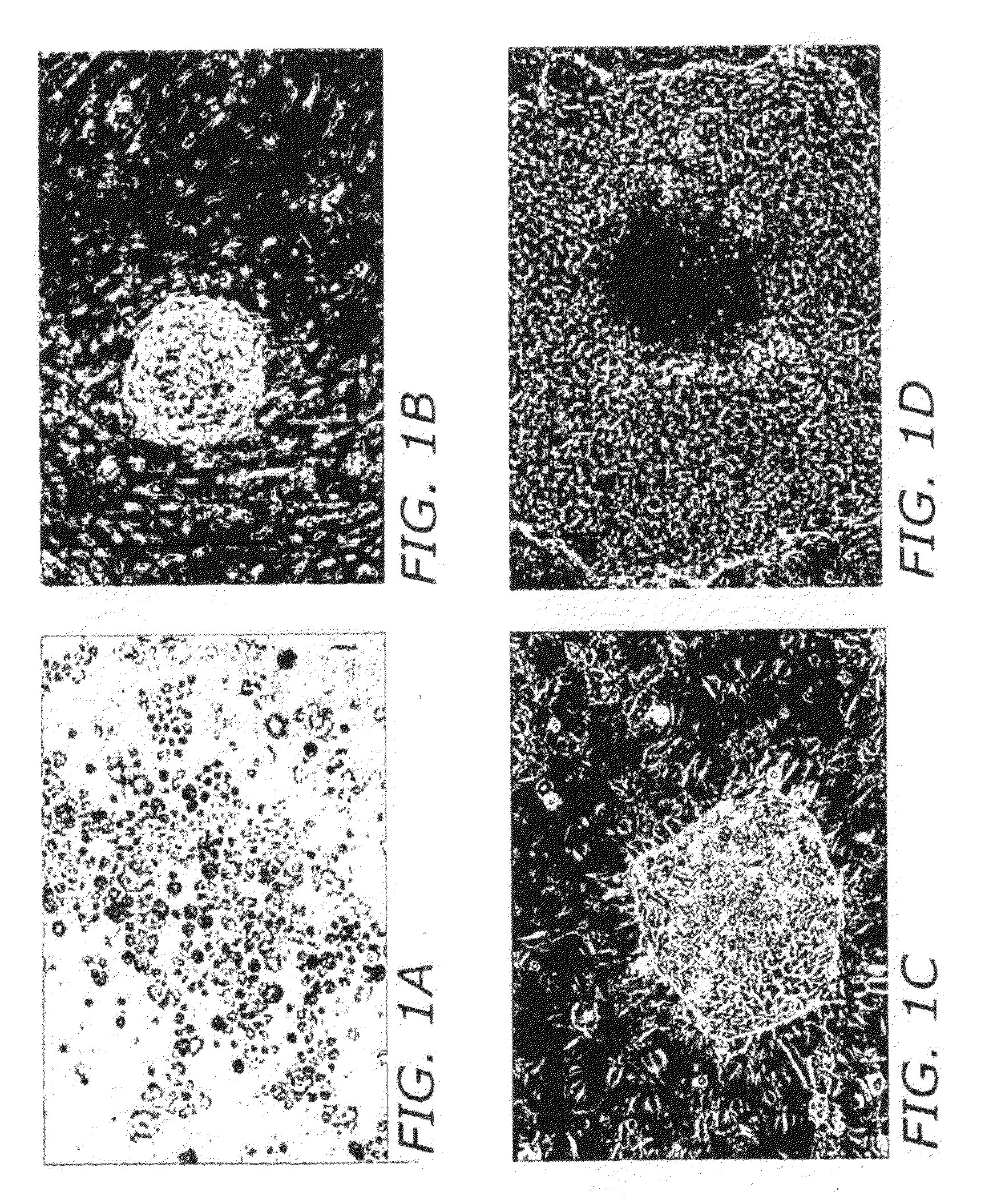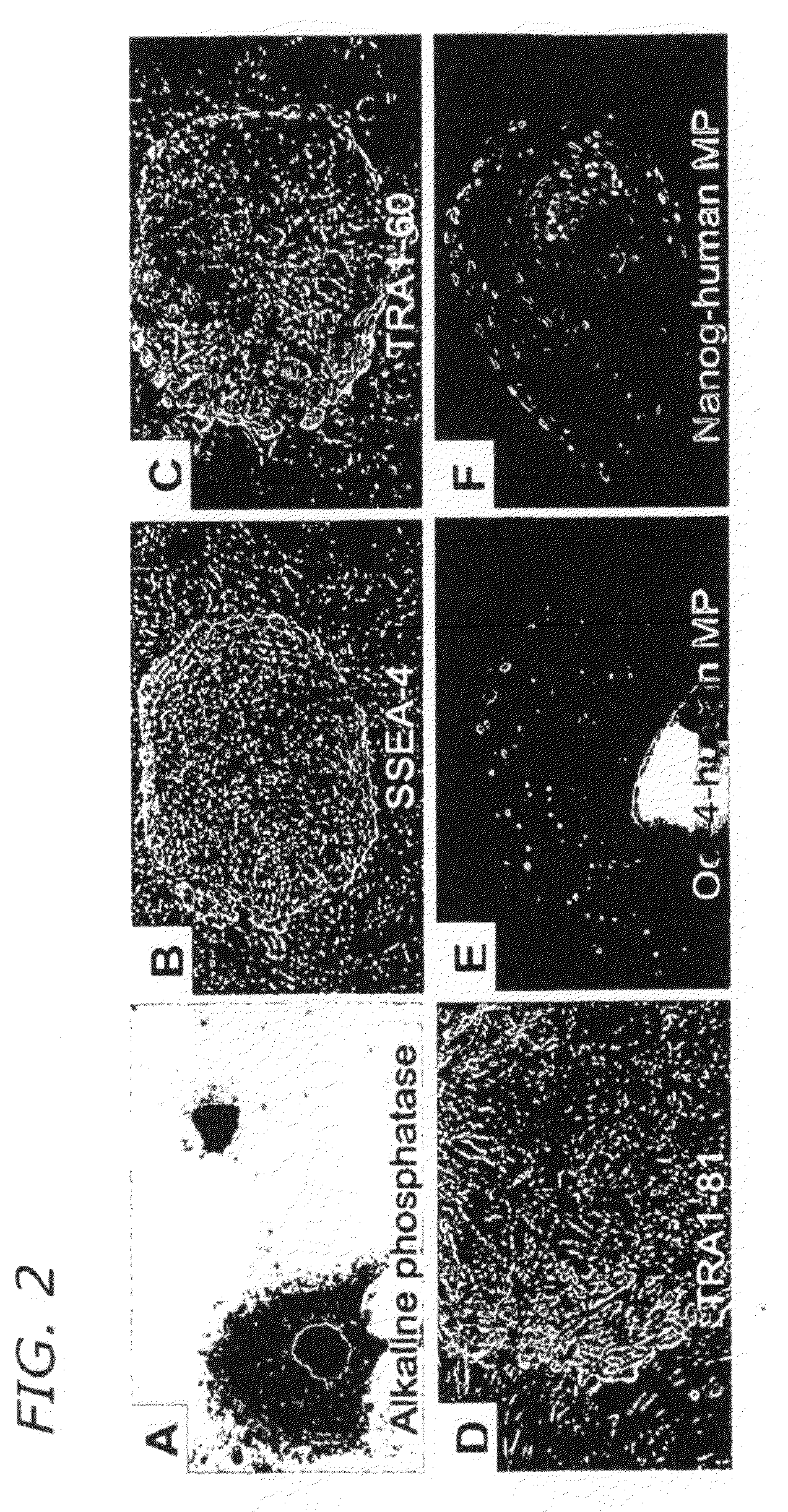Isolation, Characterization and Propagation of Germline Stem Cells
a germline stem cell and cell technology, applied in the field of germline stem cell isolation, characterization and propagation, can solve the problems of affecting the repair system, limited types, and accumulation of damage to resident stem cells
- Summary
- Abstract
- Description
- Claims
- Application Information
AI Technical Summary
Benefits of technology
Problems solved by technology
Method used
Image
Examples
example 1
Isolation of Human Fetal Gonocytes
[0159]Aborted fetuses from 11-22 weeks gestation were donated by approved clinics and maintained under sterile conditions. Gonads were decapsulated and one gonad was placed in 2.5 mL of phosphate buffered saline (PBS) and minced with sterile scissors. The minced gonadal tissue was incubated with 2.5 mL of a 2× collagenase solution (2 mg collagenase and 20 unites of DNase I per milliliter of DPBS(−)) for 30 minutes at 37° C. in a shaking water bath. During the dissociation period the sample is triturated several times to promote dissociation of the tissue. After dissociation, 1 mL of fetal bovine serum is added to deactivate the collagenase and the sample is triturated once more. The sample is then centrifuged at 400×g for 5 minutes and the cells resuspended at 5−7.5×105 per mL in PM-10™ medium plus growth factors as disclosed in co-pending U.S. patent application Ser. No. 11 / 694,687, filed on Mar. 30, 2007 which is incorporated by reference herein f...
example 2
Long Term Culture of Human Fetal Gonocytes
[0160]The isolated fetal gonocytes showed a high level of alkaline phosphatase staining at the onset of culture (FIG. 1A). Gonocytes were then cultured on STO / c (feeder cells) plates or under feeder-free conditions for colony formation. Alternatively, gonocytes can be cultured in PM-10™ medium plus growth factors on gelatin-coated plates prior to culturing on STO feeder cells.
[0161]After two weeks in culture, the human fetal gonocytes formed ‘mushroom’ colonies (FIG. 1B). At this time the mushroom colonies were transferred to fresh STO plates. After 1-3 passages, the mushroom colonies formed outgrowths indicating that the colonies are expanding (FIG. 1C). These outgrowths continued to grow on the STO feeders and form flat colonies resembling human embryonic stem cell colonies (FIG. 1D).
[0162]The cultured gonocytes were passaged onto fresh STO cells every two weeks in serum-free culture medium (PM-10™+ growth factors) for further expansion.
example 3
Expression of Pluripotent Markers by Cultured Human Fetal Gonocytes
[0163]Long-term culture in the presence of growth factors changes the gene expression profile of the gonocytes, therefore cultured gonocytes express markers that normally would be expressed in pluripotent stem cells (FIGS. 2 and 4) including alkaline phosphatase (FIG. 2A), SSEA-4 (FIG. 2B), TRA1-60 (FIG. 2C), TRA1-81 (FIG. 2D), Oct-4 and human mitochondrial protein (MP, FIG. 2E), and Nanog and human MP (FIG. 2F). Human MP is used as a human-specific marker.
[0164]FIG. 3 depicts two colonies of long-term cultured gononocyes (FIG. 3A: HF-89-p2 colony; FIG. 3B: HF-22-p7 colony) that have been cultured under serum and feeder-free conditions such that they are not exposed to animal products in the reprogramming or culture process and are not contaminated with immunogenic non-human molecules.
[0165]FIG. 4 depicts expression of a wide range of pluripotency-associated markers such as Oct-4. Nanog, Sox2 and Rex1 in expanded gon...
PUM
| Property | Measurement | Unit |
|---|---|---|
| cell cycle doubling time | aaaaa | aaaaa |
| cytofluorimetric size analysis | aaaaa | aaaaa |
| cytofluorimetric size analysis | aaaaa | aaaaa |
Abstract
Description
Claims
Application Information
 Login to View More
Login to View More - R&D
- Intellectual Property
- Life Sciences
- Materials
- Tech Scout
- Unparalleled Data Quality
- Higher Quality Content
- 60% Fewer Hallucinations
Browse by: Latest US Patents, China's latest patents, Technical Efficacy Thesaurus, Application Domain, Technology Topic, Popular Technical Reports.
© 2025 PatSnap. All rights reserved.Legal|Privacy policy|Modern Slavery Act Transparency Statement|Sitemap|About US| Contact US: help@patsnap.com



